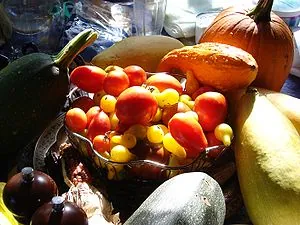Blog
6 Money Saving Tips for Eating Healthy
Do you think that it costs too much money to eat fresh fruits and vegetables? Think again! In a report released by the USDA, an adult on a 2,000 calorie diet can satisfy the Dietary Guidelines for only $2 to $2.50 per day! That means for less than .50 cents per cup, you can consume all of the fruits and veggies you need.
Fresh fruits and vegetables pack the most punch when it comes to vitamins and nutrients, but frozen fruits and vegetables are a nutritious and affordable choice as well. In Arizona, we are fortunate to have access to in season fresh fruits and veggies from farmer’s markets year-round.
When making the family’s weekly dinner menu make room for fruits and vegetables at every meal, starting with breakfast. Whether the family eats a bowl of oatmeal and a banana or mixes fresh fruit into a dish of yogurt, it’s a great way to start the day and make certain your family gets the recommended daily allowance.
Here are some tips:
- Grocery shop with a list: Making a list makes you take time to focus on what you actually need, rather than giving into cravings. Planning your weekly menu helps you to come up with well-rounded meal offerings for your family. It’s also an easy way to see if you’re incorporating the recommended amounts of fruits and veggies into your daily meals.
- Eat before you shop. Going to the grocery store hungry leads to buying items you don’t truly need but are craving. Don’t give in to impulse purchases.
- Make shopping a solitary pursuit. If you shop with someone else – a spouse or a child – you’re more likely to over-shop.
- Plan a trip to the farmer’s market as part of the weekly shopping routine. If you have something on the menu that’s not in-season, pick up frozen rather than canned.
- Buy less processed items. It might take a bit longer to prepare your meals, but fresh is better than processed foods. Keep in mind that processed foods are usually more expensive and have added salts, fats and sugars added.
- Stay in the perimeter. If you shop the outside aisles of the grocery store, you will not only save money but eat healthier. Typically, the processed foods are on the inner aisles.
Getting accustomed to shopping and eating healthier will take a bit of time. The benefits of the change for you and your family are worth the time. If you’re at a loss as to how to prepare the fresh fruits and vegetables that you’re incorporating into your meals, check out the recipe section on Fill Your Platefor healthful, delicious ideas.


















